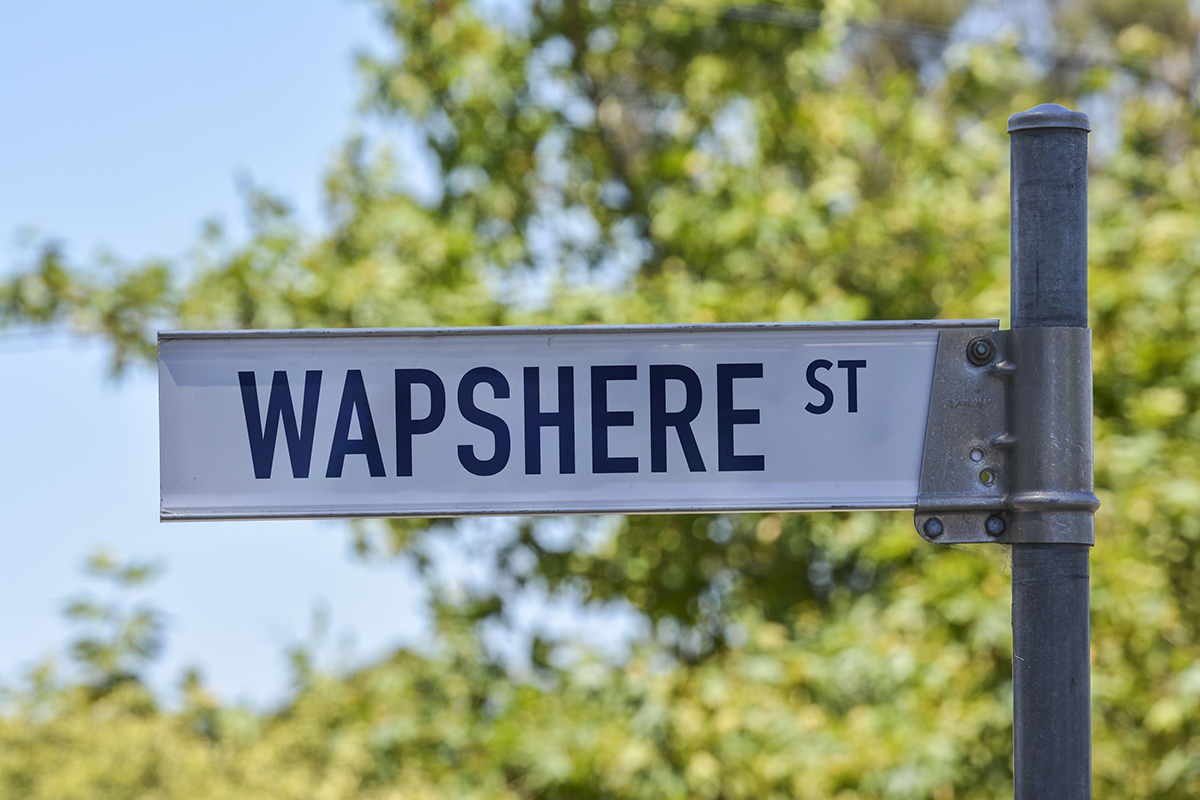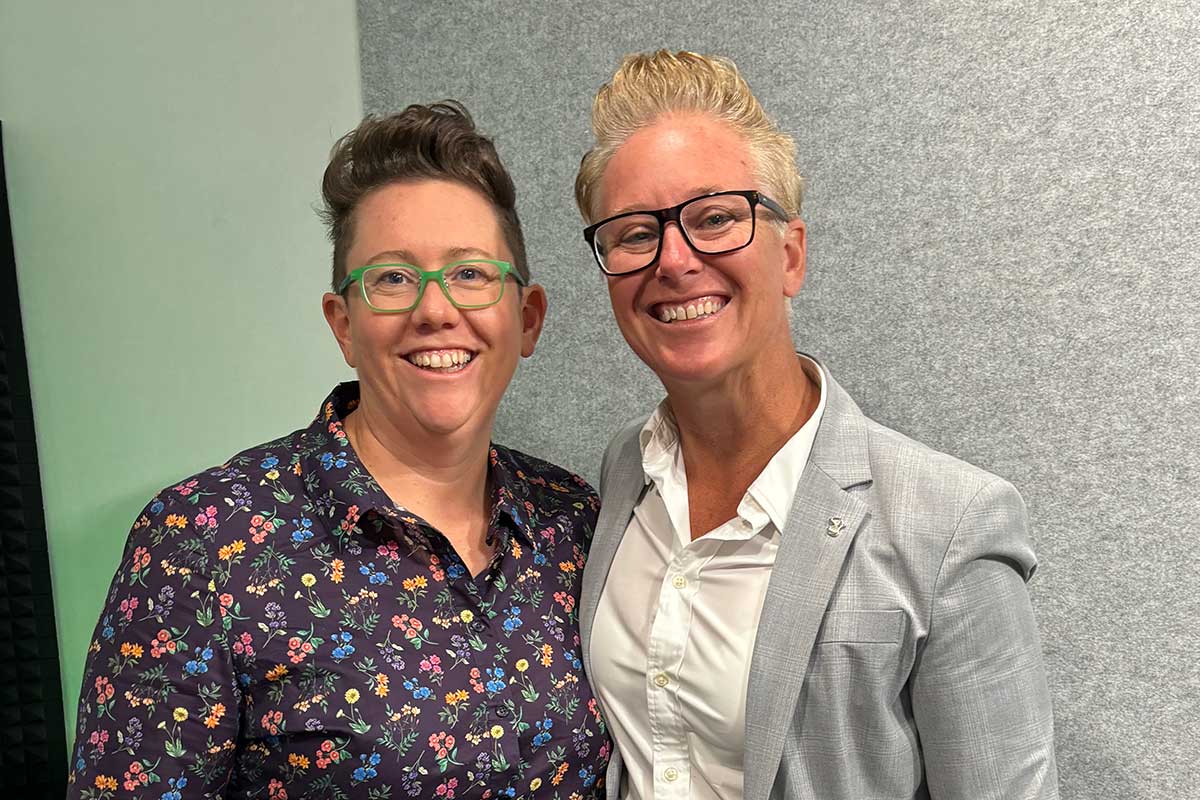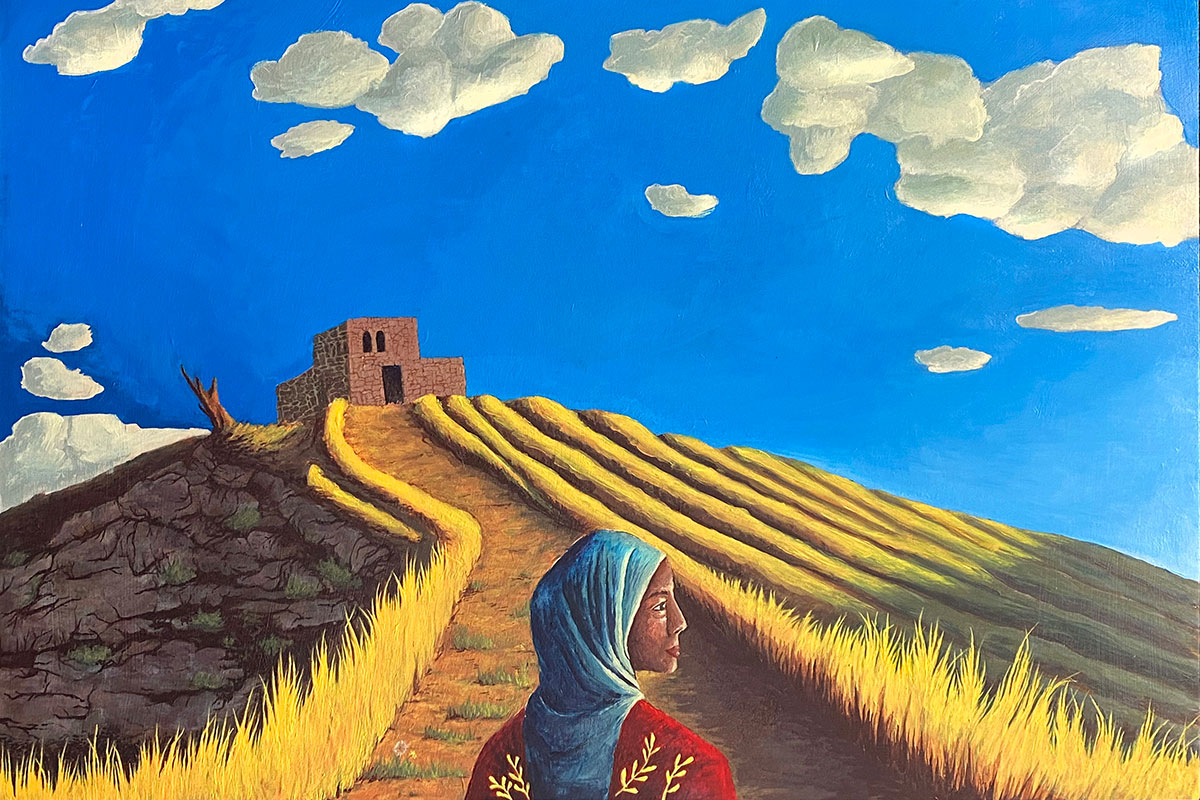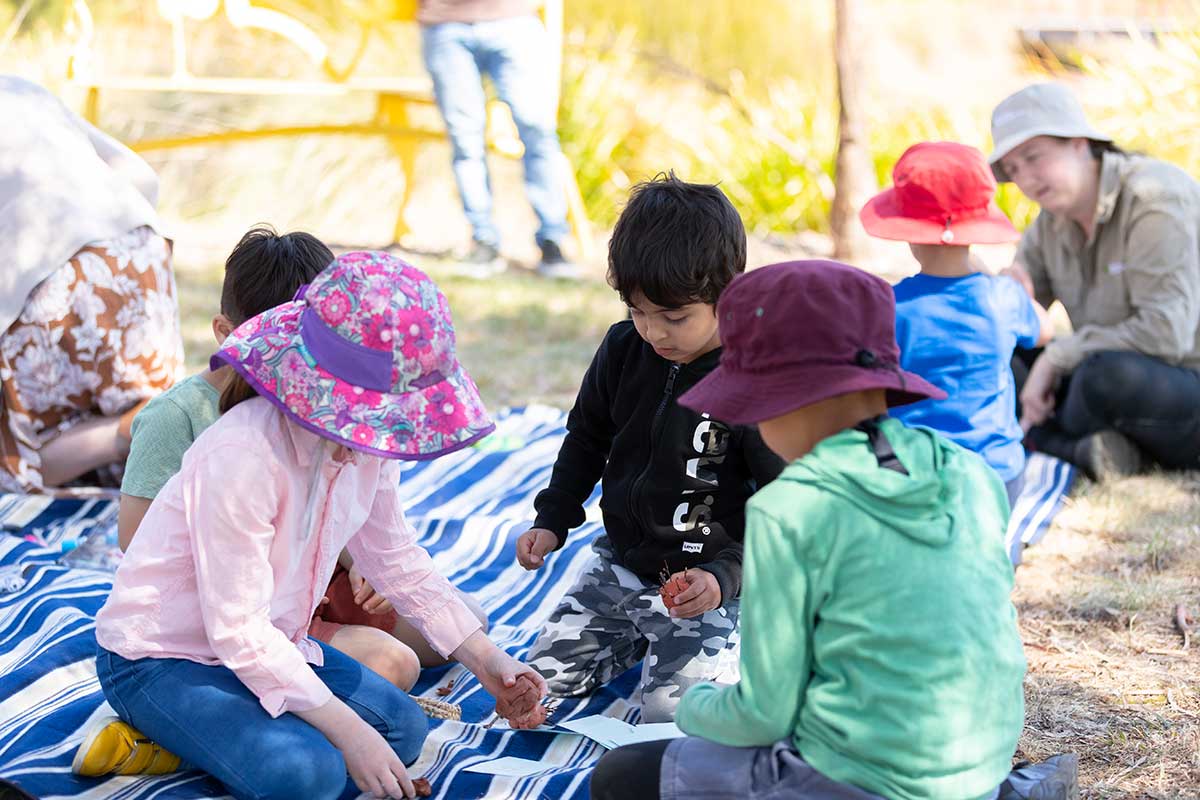The Streets of Macnamara: uniting the names of pioneers
First came Strathnairn, now Ginninderry’s second suburb of Macnamara is coming to fruition.
As it fills out with a new community full of its own characters, we meet the pioneers behind the street names of this new 7 star energy-rated suburb.
Bolza Street
Named after Eleanor (Nora) Bolza (1920–2014)
Wood scientist Nora Bolza and her husband emigrated to Australia in 1947, having left their first three children with their grandparents in Hungary. The plan was for the children to follow shortly after to join their parents, but it took until 1957 and a recommendation from then Minister for Immigration Harold Holt before the family was finally reunited.
While working for the Division of Forest Products at the Commonwealth Scientific and Industrial Research Organisation (CSIRO), Nora developed a particular interest in the properties and characteristics of timbers from across the world.
She wrote her first CSIRO publication, a German–English Glossary of Forest Products Terms, in 1959. She went on to write and co-author a comprehensive collection of reference books and became an authority on timber from Australia and around the globe.
Nora was occasionally sought for advice on which native timbers would be best suited for the construction of musical instruments. As reported in The Canberra Times in 1977, she recommended Australian tallowwood or crow’s ash as the ideal timbers for making bagpipes.
In 1978, shortly before her retirement, Nora obtained a Master of Forest Science degree at the University of Melbourne. Her thesis investigated the timber properties of the spotted gum.
Eric Willmot Way
Named after Eric Paul Willmot AM (1936–2019)
Aboriginal scholar, inventor, engineer, educator and writer, Eric Willmot spent his youth as a drover, but at the age of 20, was seriously injured in a rodeo accident and spent a year in hospital. During that period he studied, won a scholarship and attended the University of Newcastle, where he took his first degree in science.
Eric was a prolific inventor and in 1981 was named Australian Inventor of the Year. He twice won the Médaille d’Or Genève of the Salon des Inventions in Geneva, Switzerland. An important outcome of his work was the development of Australia’s first and only petrol electric hybrid vehicle. He has 90 international patents to his name.
Eric was also one of Australia’s leading educationists and in 1984 was made a Member of the Order of Australia for ‘service to education and in the field of Aboriginal studies’. He held a number of key educational leadership positions, such as the Secretary of the ACT Department of Education and Director General of Education in South Australia. He was a member of the Australian National Commission to UNESCO, and was awarded an honorary Doctorate of Laws from the University of Melbourne and a Doctorate of Letters from the University of Newcastle.
He published two novels, Pemulwuy: The Rainbow Warrior and Below the Line.
Ilma Stone Way
Named after Ilma Grace Stone (1913–2001)
A botanist, specialising in the field of Bryology (mosses), Ilma studied at the University of Melbourne’s School of Botany from 1930-1934 and received a Master of Science for her investigation of disease producing fungi in ornamental plants.
In 1936 she married and devoted the next 20 years to her family, returning to the University of Melbourne in 1957 to teach and undertake research. Stone began by studying ferns and completed her PhD in 1963. By 1969, she had turned her attention to the collection and research of mosses.
With co-author George Scott, she published The Mosses of Southern Australia in 1976. Although she retired from the School of Botany in 1978, Stone remained active as a senior associate and researcher until her death in 2001.
She has been honoured with two genera (Stonea and Stoneobryum) and two species (Macromitrium stoneae and Syrrhopodon stoneae) named after her. Stone’s remarkable collection of approximately 25,000 specimens is jointly held by the National Herbarium of Victoria and the University of Melbourne.
Jack Cusack View
Named after John (Jack) Stephen Cusack (1935–2007)
Botanist Jack Cusack, is a Gurindji/Walpiri man who was born at Mt Doreen Station, northwest of Alice Springs, in 1935. He was taken from his family when he was a young boy and raised in a mission on the Tiwi Islands, north of Darwin.
Jack was an expert botanist who made a valuable contribution to Commonwealth Scientific and Industrial Research Organisation (CSIRO) research in Australia’s north. He was CSIRO’s longest-serving Aboriginal staff member, working out of the Darwin laboratories as a Technical Officer from the early 1970s until his retirement in 2002. He contributed to many papers and books, including ‘Tiwi plants and animals, Aboriginal flora and fauna knowledge from Bathurst and Melville Islands, northern Australia’ (2001).
The Jack Cusack Memorial Lecture is held annually, celebrating the contributions Aboriginal and Torres Strait Islander peoples have made, and continue to make, in addressing the national science agenda in CSIRO.
Kailis Close
Named after Patricia Verne Kailis AM OBE (1933–2020)
Geneticist, neurologist and businessperson Patricia Hurse studied medicine at the University of Melbourne. In 1958, she moved to Western Australia to work at the Royal Perth, Princess Margaret and King Edward Memorial hospitals.
Patricia married Michael Kailis in 1960 and the following year moved to Dongara, where she became the local doctor while helping to establish a crayfish factory. The couple later expanded their business interests into in seafood, pearl jewellery and marine engineering.
In 1969 Patricia, Michael, and their four children returned to Perth where she held honorary positions in neurology and genetics at Royal Perth Hospital. During this time, Patricia introduced a program for predictive testing of Huntington’s disease and was involved in research into motor neuron disease and muscular dystrophy.
She was appointed an Officer of the Order of the British Empire, a Member of the Order of Australia and awarded the Centenary Medal for her contributions and service to medicine, science and the community.
Kaneff Street
Named after Stephen Kaneff (1926–2015)
Solar scientist and engineer, Stephen Kaneff was a global trailblazer in solar technology and a driving force behind Australia’s first solar thermal power station.
Born in Broken Hill, Stephen was the son of Bulgarian immigrants and after moving to South Australia, he graduated from the University of Adelaide with a PhD in Engineering in 1956. He went on to lecture at the university and was a Carnegie Fellow in 1961. He took up the position of Professorial Fellow at the Australian National University Research School of Physical Sciences in 1966 and five years later was appointed Professor and Head of the Department of Engineering Physics.
In 1979 Stephen helped secure NSW government funding to design and build the first commercial solar power station in Australia at the remote opal mining town of White Cliffs, NSW. The power station was a breakthrough in thermochemical solar energy research and showed the viability of solar power as a large-scale source of energy. The project led to the construction of the ANU’s ‘Big Dish’ which was at the time the world’s largest solar dish collector.
After his retirement from the ANU in 1991 he was Head, Energy Research Centre, ANUTECH. In 2012 he was inducted into the Australian Solar Council’s Solar Hall of Fame. Stephen was active in the Bulgarian community in Adelaide and Canberra, supporting the establishment of the ACT’s Bulgarian-Australian Association ‘Rodina’ in 2007.
Oppenheimer Street
Named after The Oppenheimer pole
The Oppenheimer pole is a galvanised iron telegraph pole that became the mainstay of Australia’s remarkable overland telegraph line. Completed in 1872, the line ran from Port Augusta to Darwin, connecting Australia for the first time to the rest of the world.
The pole was invented and patented by German-born Joseph Oppenheimer (1820–1893) who worked closely with Postmaster-General and Superintendent of Telegraphs, Charles Todd (1826–1910) during the line’s construction. Initially intended for use in sections of the line where there was no suitable timber, Oppenheimer poles, and poles made by Siemens, were used extensively due to concerns over termites and fire and by 1900, had replaced all wooden poles.
Oppenheimer poles were made of three sections that telescoped into each other for transportation. Once on site the pole could be extended to its full height of 5.8 metres and fixed in place by heating a metal collar over each joint.
Still standing at some locations along the old line, which was decommissioned in 1980, Oppenheimer poles can occasionally be found repurposed as flag poles or veranda supports.
Payne Scott Way
Named after Ruby Violet Payne-Scott (1912–1981)
Radiophysicist and women’s rights advocate Ruby Payne-Scott received a Master of Science in Physics from the University of Sydney in 1936.
In 1941, she joined the Radiophysics Laboratory of the Council for Scientific and Industrial Research, now CSIRO. First engaged in top-secret work investigating new developments in radar, Ruby helped to produce aircraft warning radar systems used in World War II in the Pacific.
In 1946, the scientific journal Nature published a joint article by Ruby documenting a connection between sunspots and increased radio emissions from the Sun. She was largely responsible for the initial identification and categorization of Type I and Type III radio bursts.
With colleague Alec Little, she designed and built new equipment that could map solar radio emission strength and polarisation once every second. While undertaking this ground-breaking work, she had to deal with entrenched discrimination in the workplace and publicly fought to retain equal pay for female scientists introduced during the later stage of the war.
Impacted by the Commonwealth marriage bar and expecting a child, she resigned from the CSIRO in 1951. She later taught maths and science at Danebank Anglican School for Girls, Hurstville. In 2008, CSIRO initiated the Payne-Scott Awards to assist researchers returning from family-related career breaks.
Sherrard Crescent
Named after Kathleen Margaret Maria Sherrard (1898 – 1975)
Geologist and women’s activist Kathleen Sherrard studied geology at Melbourne University, graduating with a Master of Science in 1921. While studying she worked at the university as a demonstrator and rose to be Assistant Lecturer in Geology. She was Honorary secretary of the Victorian Women Graduates’ Association (1920–1928) and of Australian Federation of University Women (1928–1938).
In 1928 she married and moved to Sydney where she was able to use the facilities of the Department of Geology at the University of Sydney. Increasingly interested in palaeontology, she studied and published scholarly articles on graptolites (extinct marine fossils) and attended conferences in Australia and overseas.
The fossil Monograptus sherrardae is named in honour of her pioneering work in the study of graptolites. Kathleen was a member of the Royal Societies of New South Wales and Victoria, the Linnean Society of New South Wales and the Geological Society of Australia.
Kathleen helped to establish the Australian Association of Scientific Workers in 1939 and campaigned for women’s rights and promoted the status of women in science. She was Honorary Secretary of the Status of Women Council (1949–1950) and belonged to the United Associations of Women and the Women’s International League for Peace and Freedom.
Sue Newton Crescent
Named after Susan (Sue) Elizabeth Newton (1955–2003)
Research scientist and Canberran Sue Edwards studied biochemistry at the Australian National University.
In 1974 as an undergraduate she married and went on to obtain a Doctor of Philosophy (PhD). Following two post-doctoral appointments in Canberra, she was appointed Postdoctoral Research Fellow at Wellcome Biotechnology in the United Kingdom. Sue returned to Australia to take up a position as Senior Research Scientist with Pitman-Moore in Melbourne, and later as Research Fellow at the Centre for Animal Biotechnology at the University of Melbourne.
After joining the Victorian Institute of Animal Science and being appointed Head of the Molecular Vaccines Department, Newton worked on the development of vaccines against gastrointestinal parasites.
In 2001, she was awarded Agriculture Victoria’s Executive Award for Leadership, after being nominated by her staff and the director of the Animal Science Institute. In 2005, her achievements were honoured by Melbourne University when it established the Dr Sue Newton Scholarship to support Veterinary Science post-graduates.
Wapshere Street
Named after Anthony John Wapshere (1936–2007)
British-born ecologist Tony Wapshere studied Zoology at Exeter University and received a PhD in Insect Ecology from Leeds University.
In 1962 he came to Australia as a Senior Research Scientist at the Commonwealth Scientific and Industrial Research Organisation (CSIRO) Division of Entomology in Brisbane. In 1966, Anthony helped set up the CSIRO Biological Control Unit in Montpellier, France and, with plant ecologist Richard Groves, undertook a survey of skeleton weed considering potential biological control agents. The French location was chosen due to Australia’s strict quarantine and biosecurity requirements.
Skeleton weed Chondrilla juncea, was first recorded in Australia in 1917 and spread throughout the south-eastern wheat belt, dramatically reducing yields, and proving difficult to control. By the 1950s it was considered Australia’s worst weed.
Anthony considered nine potential control organisms in detail. Three species introduced into Australia in 1971 became widely established. The rust fungus Puccinia chondrillina, was extremely successful, dramatically reducing the density of skeleton weed over a just few years. The eriophyid mite Eriophyes chondrillae and the gall midge Cystiphora schmidti further assisted in weakening the plant.
In a 1974 paper, ‘The ecology of Chondrilla juncea in the western Mediterranean’, Wapshere et al. described the impact of biological control and laid out the method for the agricultural management of skeleton weed in Australia.



